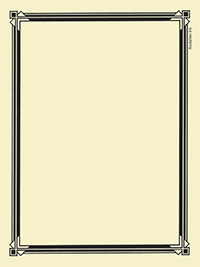 This past August, my husband and I had the good fortune to travel to Europe. We spent a week in Lucerne, Switzerland, attending spectaular concerts at the renowned Lucerne Music Festival and hiking in the Alps with friends. After traveling by train to Italy, we visited Lucca, Florence and Cinque Terra, walking for miles, and loving the history and beauty of the area.
This past August, my husband and I had the good fortune to travel to Europe. We spent a week in Lucerne, Switzerland, attending spectaular concerts at the renowned Lucerne Music Festival and hiking in the Alps with friends. After traveling by train to Italy, we visited Lucca, Florence and Cinque Terra, walking for miles, and loving the history and beauty of the area.
From there, we took the train to Venice, where we took in many of the wonderful museums and explored the city. One of the museums we visited was the Museo Correr in Venice, Italy. The Correr sits directly across Piazza San Marco from Basilica San Marco, and is steps away from the Grand Canal. There is an awe-inspiring amount of history and culture in just this one small area but I am going to focus on one exhibit in the Correr.
 Within the museum is the Pisani Library, a room filled with beautiful walnut bookcases that came from the Pisani family palace at San Vidal. The Pisanis, an aristocratic family in Venice from the 12th to 18th centuries, were an important influence on the culture and politics of the time. According to the Museo Correr, they were “the first to set up what might be called a library-museum, in an attempt to endow the city’s publishing industry with its own aura of grandeur and munificent service to the State.”
Within the museum is the Pisani Library, a room filled with beautiful walnut bookcases that came from the Pisani family palace at San Vidal. The Pisanis, an aristocratic family in Venice from the 12th to 18th centuries, were an important influence on the culture and politics of the time. According to the Museo Correr, they were “the first to set up what might be called a library-museum, in an attempt to endow the city’s publishing industry with its own aura of grandeur and munificent service to the State.”
The bookcases today are filled with “rare manuscripts and printed works, dating from the early Sixteenth Century to the end of the  Eighteenth.” Surrounding the shelves are display cases with beautiful books from the 1500-1600s.
Eighteenth.” Surrounding the shelves are display cases with beautiful books from the 1500-1600s.
The chandelier hanging above was made from Murano glass in the 1700s. Murano is a series of small islands just outside of Venice and has been home to glass-making since 1291, when the glassmakers of Venice were forced to move there due to fear of fire within the city and its wood buildings.
fear of fire within the city and its wood buildings.
It was fascinating and awe-inspiring to view the intricate artwork in books from hundreds of years ago. I’m grateful that people such as the Pisani family valued their libraries and preserved the world’s heritage through books. During this “digital age,” let’s not forget the importance and endurance of the printed page.
 New York Times bestselling author Maggie Stiefvater has used more than one design for her young adult Raven Cycle series. Maggie posts photos and offers signed bookplates through her
New York Times bestselling author Maggie Stiefvater has used more than one design for her young adult Raven Cycle series. Maggie posts photos and offers signed bookplates through her 
 Bookplate Ink has also printed bookplates for
Bookplate Ink has also printed bookplates for option, another possibility is one of our
option, another possibility is one of our  During this visit, we first went to
During this visit, we first went to  sites contains a “who’s who” list of important people, all from Dayton: inventor Charles Kettering, John Patterson of NCR, George Huffman of Huffy Bicycles, and George Mead of Mead Paper and newspaper columnist Erma Bombeck, among others.
sites contains a “who’s who” list of important people, all from Dayton: inventor Charles Kettering, John Patterson of NCR, George Huffman of Huffy Bicycles, and George Mead of Mead Paper and newspaper columnist Erma Bombeck, among others. gliders and planes. Also in the Center is the original 1905 Wright Flyer III, the world’s first practical airplane. As you can see in the photo, a model of Wilbur Wright is shown flying the plane. One of the things that struck me while reading The Wright Brothers is that Orville Wright died in 1948, which seemed amazingly recent to me. The building where the Flyer is housed was designed by Orville, though he didn’t live to see it built. Our tour guide mentioned that his father-in-law belonged to the Engineer’s Club in Dayton and saw Orville there many times.
gliders and planes. Also in the Center is the original 1905 Wright Flyer III, the world’s first practical airplane. As you can see in the photo, a model of Wilbur Wright is shown flying the plane. One of the things that struck me while reading The Wright Brothers is that Orville Wright died in 1948, which seemed amazingly recent to me. The building where the Flyer is housed was designed by Orville, though he didn’t live to see it built. Our tour guide mentioned that his father-in-law belonged to the Engineer’s Club in Dayton and saw Orville there many times. the automobile was still very young. McCullough’s book mentions Wilbur and Orville being picked up by carriage, not an automobile, when arriving home by train. In fact, at Carillon Historical Park I learned that the patent for the first electric ignition device for automobiles was granted to Charles Kettering of Dayton in 1915. The early 1900s were a time of great inventiveness and industrialism in Dayton. Imagine living in Dayton in 1905 and being able to visit with Paul Laurence Dunbar, Wilber and Orville Wright, and Charles Kettering, all within walking distance.
the automobile was still very young. McCullough’s book mentions Wilbur and Orville being picked up by carriage, not an automobile, when arriving home by train. In fact, at Carillon Historical Park I learned that the patent for the first electric ignition device for automobiles was granted to Charles Kettering of Dayton in 1915. The early 1900s were a time of great inventiveness and industrialism in Dayton. Imagine living in Dayton in 1905 and being able to visit with Paul Laurence Dunbar, Wilber and Orville Wright, and Charles Kettering, all within walking distance. And finally, to tie this all in with bookplates, Bookplate Ink has a beautiful design of an airplane similar to the Wright Brother’s flyer, painted by Dayton native and artist Michael Bonilla.
And finally, to tie this all in with bookplates, Bookplate Ink has a beautiful design of an airplane similar to the Wright Brother’s flyer, painted by Dayton native and artist Michael Bonilla. 
 addition would be bookplates! When I contacted Katie, it turned out she had just looked at Bookplate Ink’s bookplates on Etsy! Since the shower was for my future granddaughter, I created a new bookplate for the shower.
addition would be bookplates! When I contacted Katie, it turned out she had just looked at Bookplate Ink’s bookplates on Etsy! Since the shower was for my future granddaughter, I created a new bookplate for the shower. Bookplate Ink has printed bookplates for customers’ baby showers, but I had never been to a book shower. I was very impressed with the way Katie put the shower together and thought it would be fun and helpful to share her ideas.
Bookplate Ink has printed bookplates for customers’ baby showers, but I had never been to a book shower. I was very impressed with the way Katie put the shower together and thought it would be fun and helpful to share her ideas.
 of beverages, including Pinkalicious spa water and Bear’s sangria, both based on children’s books. For coffee, Katie had white mugs on which fun literary messages had been printed with a Sharpie marker.
of beverages, including Pinkalicious spa water and Bear’s sangria, both based on children’s books. For coffee, Katie had white mugs on which fun literary messages had been printed with a Sharpie marker. atie had a desk set up with a wonderful, creative guest book. The pages were removable to allow guests to write a message to the parents, decorate with a variety of stickers, and slip the paper into a plastic sleeve in the book. I put the bookplates here to allow the guests to fill them out before putting them with the books they brought. It would be easier to send baby shower bookplates to your guests along with the invitations, but we didn’t have a chance to coordinate this.
atie had a desk set up with a wonderful, creative guest book. The pages were removable to allow guests to write a message to the parents, decorate with a variety of stickers, and slip the paper into a plastic sleeve in the book. I put the bookplates here to allow the guests to fill them out before putting them with the books they brought. It would be easier to send baby shower bookplates to your guests along with the invitations, but we didn’t have a chance to coordinate this.





